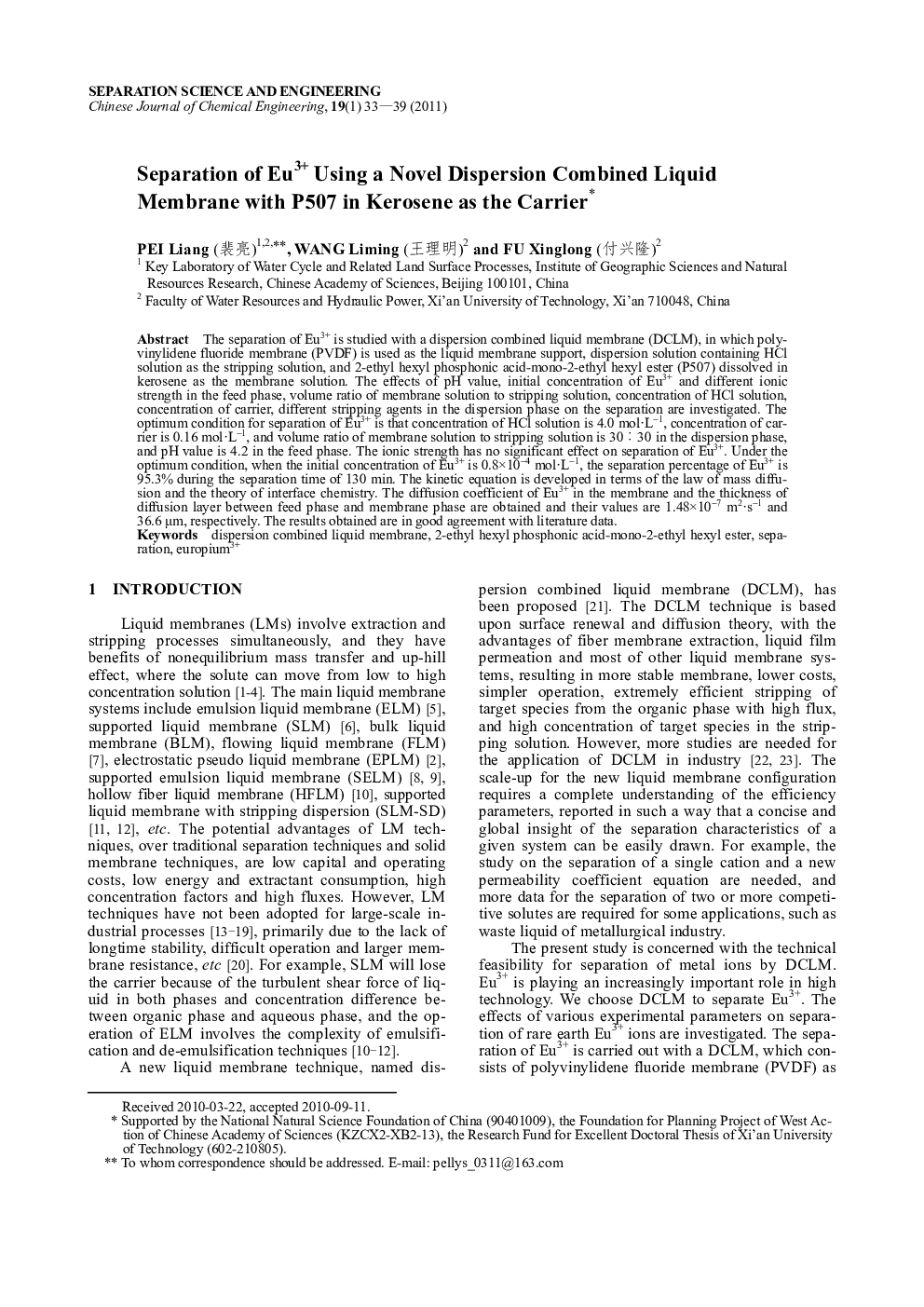| Article ID | Journal | Published Year | Pages | File Type |
|---|---|---|---|---|
| 167601 | Chinese Journal of Chemical Engineering | 2011 | 7 Pages |
The separation of Eu3+ is studied with a dispersion combined liquid membrane (DCLM), in which polyvinylidene fluoride membrane (PVDF) is used as the liquid membrane support, dispersion solution containing HCl solution as the stripping solution, and 2-ethyl hexyl phosphonic acid-mono-2-ethyl hexyl ester (P507) dissolved in kerosene as the membrane solution. The effects of pH value, initial concentration of Eu3+ and different ionic strength in the feed phase, volume ratio of membrane solution to stripping solution, concentration of HCl solution, concentration of carrier, different stripping agents in the dispersion phase on the separation are investigated. The optimum condition for separation of Eu3+ is that concentration of HCl solution is 4.0 mol·L−1, concentration of carrier is 0.16 mol·L−1, and volume ratio of membrane solution to stripping solution is 30:30 in the dispersion phase, and pH value is 4.2 in the feed phase. The ionic strength has no significant effect on separation of Eu3+. Under the optimum condition, when the initial concentration of Eu3+ is 0.8 × 10−4 mol·L−1, the separation percentage of Eu3+ is 95.3% during the separation time of 130 min. The kinetic equation is developed in terms of the law of mass diffusion and the theory of interface chemistry. The diffusion coefficient of Eu3+ in the membrane and the thickness of diffusion layer between feed phase and membrane phase are obtained and their values are 1.48 ×10−7 m2·s−1 and 36.6 μm, respectively. The results obtained are in good agreement with literature data.
